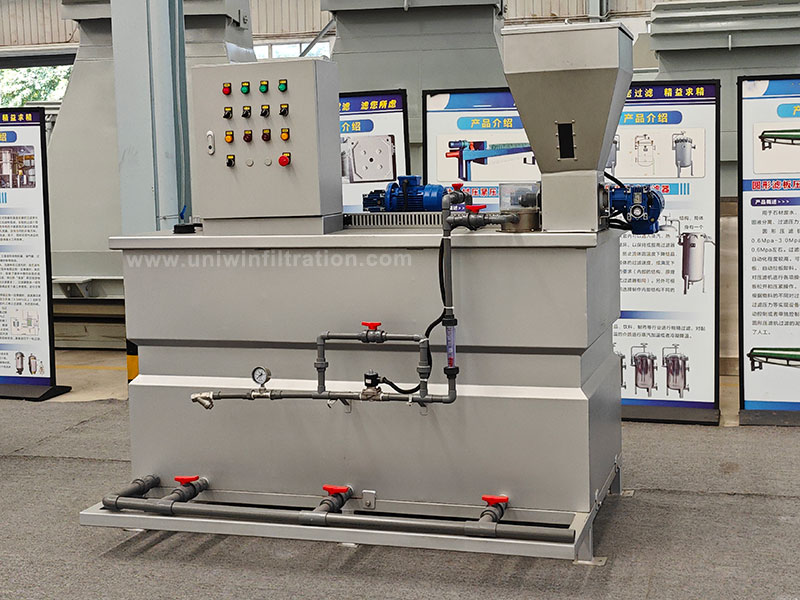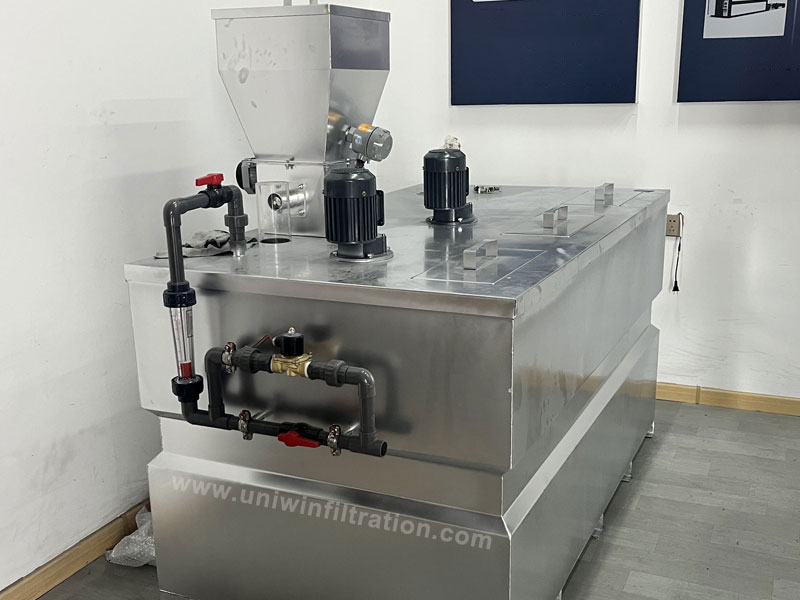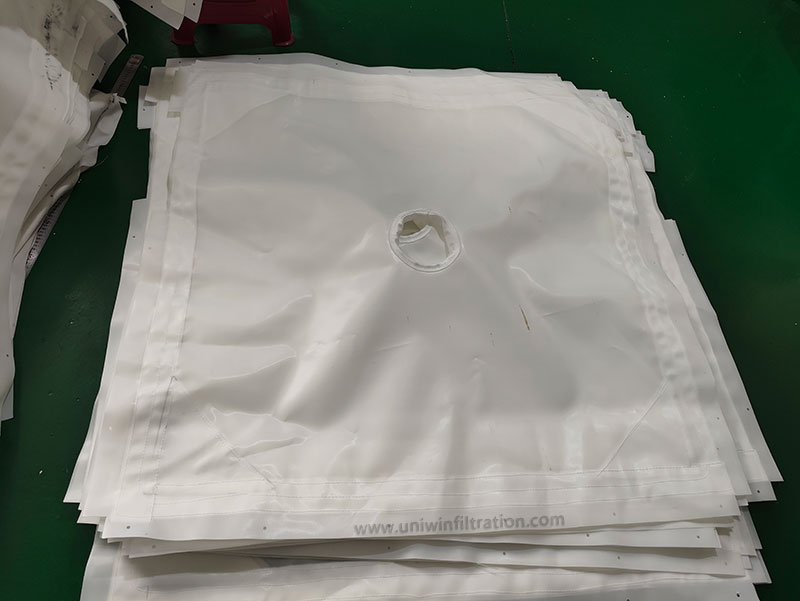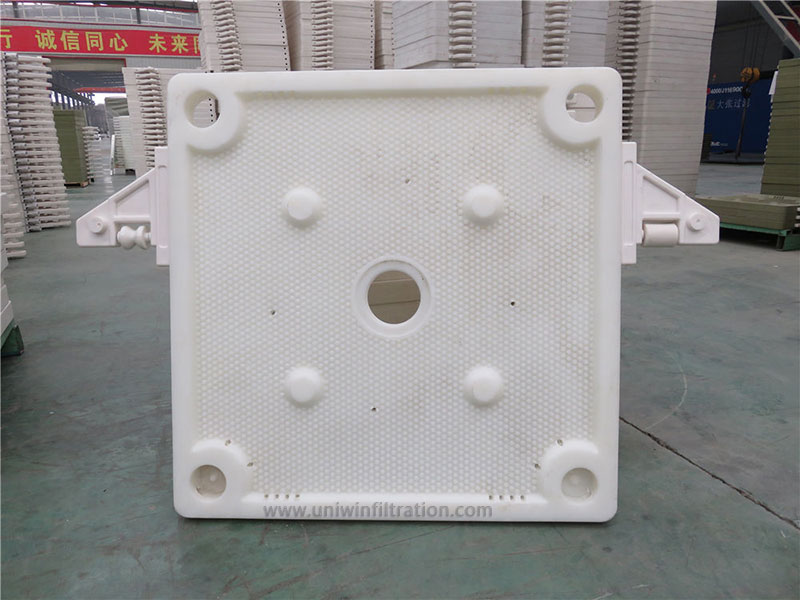Polymer Dosing System
The polymer dosing system for a filter press is a key auxiliary device in the filter press system. It is primarily used to add specific chemical agents to the suspension being processed to improve solid-liquid separation. Proper dosing can significantly increase filtration efficiency, speed up filtration, and improve the dryness of the filter cake and the cleanliness of the clarified liquid.
Components of a Polymer Dosing System
- Polymer dissolution system: Used to mix the chemical (such as PAM, PAC, etc.) with water in the correct proportion.
- Polymer storage tank: Ensures complete dissolution and uniform mixing of the chemical solution.
- Metering pump: Precisely controls the dosing volume to ensure stable dosing.
- Piping system: Transports the chemical solution to the mixing point before the filter press.
- Electronic control system: Automatically or semi-automatically controls the dosing process, allowing for settings for flow rate, concentration, and other parameters.

Working Principle of the Polymer Dosing System
Reagent preparation stage
The reagent is stirred in the storage tank to maintain a uniform state, preventing sedimentation and stratification. Depending on the sludge properties, the reagent may need to be diluted to an appropriate concentration.
Precise dosing
The control system automatically calculates the required reagent dosage based on parameters such as feed flow rate and sludge concentration. The dosing pump draws the reagent from the storage tank and delivers it to the mixing point according to the set dosing ratio.
Full mixing reaction
The reagent is thoroughly mixed with the sludge in the mixing device. The high-molecular-weight substances in the flocculant interact with the sludge particles through electrical neutralization, adsorption, and bridging, causing the fine particles to aggregate into larger flocs.
Entering the filter press stage
The conditioned sludge enters the filter press. Due to the loose and porous structure of the flocs, water is more easily separated from the interstices between the flocs, significantly improving filtration efficiency.

Common Polymer
- PAM (polyacrylamide): A flocculant that improves solid-liquid separation efficiency for wastewater and slurries containing large amounts of suspended particles.
- PAC (polyaluminum chloride): A coagulant that removes colloidal matter and is suitable for municipal and industrial wastewater.
- Lime: A pH adjuster that aids sedimentation and is suitable for acidic wastewater.
- Activated carbon: An adsorbent that removes organic pollutants and is suitable for oily and dye-containing wastewater.
Function of the Dosing Device
Improving sludge dewatering performance
By adding flocculants and other chemicals, the stability of sludge colloids is disrupted, causing fine particles to agglomerate into larger flocs, reducing sludge specific resistance and improving filtration performance.
Improving filter press efficiency
The conditioned sludge exhibits improved filtration performance, significantly shortening the filter press cycle, increasing throughput per unit time, and reducing energy consumption.
Improves the solids content of the sludge cake
Chemically conditioned sludge can release more water during the filter pressing process, reducing the moisture content of the filter cake and increasing its solids content, making it easier to transport and dispose of.

Reduces filter cloth clogging
Appropriate chemical addition can reduce the risk of fine particles clogging the filter cloth, extending its service life and reducing maintenance costs.
Guaranteed effluent quality
Precisely controlling the dosage of the chemical can achieve optimal dehydration while avoiding filtrate contamination caused by overdosage.
Automated control
Modern polymer dosing systems are equipped with automated control systems that automatically adjust dosage based on changing sludge properties, reducing manual operations and improving system stability.





